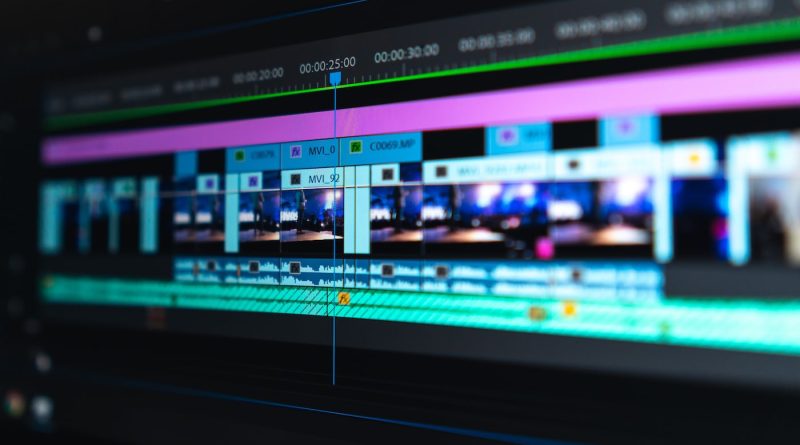8 easy drone video editing tips for beginners
Introduction
A drone is a pilotless aircraft that can be used for aerial videography. Professionals use drones to take expansive aerial pictures and videos. It’s like taking an eagle’s eye view of the glorious city, beach, or monument. These days drones are specially designed for photography and cinematography, which provides a new way to capture some of our desired destinations from an aerial view.
Imaging and cinematography have become easy with drones. The drone cameras’ techniques, resolutions, and video quality have simultaneously advanced with time. Drones can film from the sky and provide excellent footage. They are made up of material that defines their durability, resistance to damage, and lightweight. Videography through drones has gained massive popularity among content creators, cinematographers, and filmmakers.
Movement Planning Perfectly planning how we want to shoot our video is the most vital initiative. The video shot must keep the editing workflow and a couple of practices before the actual shoot will enhance the video. Visualizing the images and how we will fly the drone and capture high-quality video are pre-planned. It helps to envision our entire video ahead in the form of mini-scenes and can enable us to shoot.
A pre-flight checklist to reduce risks
Preparation is the key to success, especially with a drone. The drone needs to be checked before we get it into the air.
It is essential to start a drone slowly and not to be hasty to reach great heights. Then pitch it and roll it smoothly in a different direction. We can fly it in both directions and rotate it 180°. Shooting long shots with the drone to make the video more elaborate during editing is a value-added benefit. It is not easy to edit videos, constantly switching angles and speeds along their path. We must check the following things beforehand to avoid mistakes:
- Any loose components
- Camera fittings and appropriate settings
- Fully charged battery
- Insertion of SD-card
- The drone is calibrated and scans around
Stabilized and high-quality footage
Shooting the video in a high-quality format and with a high frame rate is very important. It is beneficial and easy while edit videos with stabilized shots. We can turn high-quality videos into professional-looking videos. Fisheye removal is an essential task while editing raw videos from drones. Correction of lens Distortion is necessary while shooting using a drone camera to avoid blur images. The video editing software is now available online to stabilize videos into the required video frames. It could take a while to investigate the clip but transform it into a highly professional video.
Keep it short
When it comes to drone videography, it’s easy to get carried away and end up with hours of footage. But let’s be real, nobody has the attention span for that. That’s why it’s important to keep your videos short and sweet. Think of it like a snack – you want just enough to satisfy your craving, but not so much that you’re stuffed.
But how short is too short? That depends on your content and the platform you’re sharing it on. For social media, shorter is generally better – aim for a video that’s around 60-90 seconds long. If you’re creating a longer video, consider breaking it up into shorter segments to keep your audience engaged.
Engaging editing
It’s important to keep your audience engaged with your content. That’s why editing is such a crucial part of the process. With a little bit of creativity, you can transform your raw footage into a visual masterpiece that keeps viewers coming back for more.
Watch all the footage before you start to edit. It will help us to find and select the clips we want to use for our video much easier when we finally sit for editing.
A good way is to change visuals every 4-6 seconds. It breaks visual similarity and keeps the audience involved in the video. We can do this by creating cuts where we swiftly move to a zoomed-in shot for 2 seconds. A newly created video can also be added between the existing videos using online video making tools.
Another way to make your videos more engaging is to add text overlays. This can be a great way to highlight key points or add context to your footage. But don’t overdo it – too much text can be overwhelming and take away from the visual experience.
Use transitions
Transitions can take your drone video to the next level by adding a professional touch to your footage. Think of them like a magic trick – they can make the audience feel like they’re being transported from one scene to the next. But not all transitions are created equal – some can be cheesy or overused.
One classic transition that never goes out of style is the crossfade. This transition gradually fades one shot into another, creating a smooth and seamless transition. It’s perfect for showing a change in time or location without jarring the viewer.
If you want to get more creative with your transitions, try experimenting with different effects. A dissolve can create a dreamy, ethereal effect, while a zoom transition can give the illusion of movement. But be careful not to overdo it – too many flashy transitions can be distracting and take away from your footage.
Color correction
Color correction is a crucial step in editing drone footage, but it doesn’t have to be a daunting task. Think of it like putting on makeup – just a little bit of color correction can go a long way. The goal is to enhance the colors in your footage and make them pop.
One easy way to get started with color correction is to use a preset. Most editing software comes with built-in color correction presets that can quickly adjust the color temperature, contrast, and saturation of your footage. But don’t rely on presets too heavily – they may not be perfect for every shot.
If you want to take your color correction skills to the next level, try using a color grading tool. These tools allow you to make more precise adjustments to the color and tone of your footage. But be warned, color grading can be addictive – once you start playing with different color combinations, you may never want to stop!
Music and sounds
We should ensure that our video is engaging. We need to add some decent sounds or a music track to bring the story together for our viewers. It is one of the most significant ways to keep people watching a video for the most extended period. Music alone can tell a story, so choosing the right song may take little time, but it will give our specialized video touch. Music selection should complement the feeling envisioned in a video.
Combine multiple video clips easily
Stitching together multiple clips to create a seamless video with just a few finger swipes or drag-and-clicks is an easy task. But once we are done combining, we need to decompress these files.
Files are needed to be decompressed before using them to create flawless videos. Relaxing the file allows the computer to play the video file smoothly without distortion.
When we are done with all the video editing jobs, the most crucial part is to export the video in the most suitable format. It is advisable to export the video in the H.264 format. Selecting the “YouTube 1080p HD” will help to strike a good balance between video quality and file size.
Conclusion
As humanity drives towards modernization, drones are expected to dominate every sector. Drone photography and videography are great tools to accumulate accurate information about particular sites such as mines, rivers, forests, and mountains. So producing the best result is essential to stay ahead of the competition, which we can achieve by using modern technological




